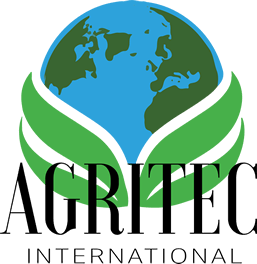Liquid Calcium and Sustainable Agriculture
The landscape of agriculture is constantly evolving, driven by the pressing need for sustainability and efficiency in farming practices. As the world grapples with environmental challenges and the demand for food increases, the agriculture industry must adapt and innovate. Among the forefront of these innovations is liquid calcium, which can redefine soil management and enhance sustainable agriculture practices. This blog post delves into the future of farming, focusing on the emerging innovations in liquid calcium products and application methods, and their role in advancing sustainable agriculture.
Understanding the Current Landscape: Liquid Calcium vs. Traditional Lime
Traditionally, farmers have relied on agricultural lime (ag-lime) to manage soil pH levels. However, the slow reaction time and uneven soil coverage associated with ag-lime often lead to inefficiencies and delayed results. In contrast, liquid calcium products offer a more refined approach to soil amendment. Liquid Calcium products,like AgriTec International’s Pro-Cal and Advanced-Cal, deliver calcium in a soluble form, promising immediate absorption and effectiveness, drastically improving soil calcium levels and pH balance.
The Science Behind Liquid Calcium
Liquid calcium is not merely a quicker alternative to lime; it fundamentally changes the way nutrients are delivered to the soil. The soluble nature of liquid calcium ensures that it integrates rapidly with the soil, providing immediate benefits in terms of nutrient availability and soil structure improvement. This method not only enhances the efficiency of calcium uptake by plants but also improves the overall soil health by promoting better water retention and aeration.
Nutrient Solutions
As we look towards the future, the potential for innovation in liquid calcium products and application methods is vast. Researchers and agricultural companies are continuously exploring ways to enhance the efficacy and sustainability of these products. Developing multi-nutrient solutions that combine liquid calcium with essential elements like magnesium and potassium could simplify the management of nutrient application, ensure balanced soil health and reduce the complexity of agricultural inputs. Future liquid calcium products are likely to see improvements in their chemical formulations, increasing their efficiency and reducing environmental impact.
Precise Sustainability
Liquid calcium is poised to play a crucial role in sustainable agriculture by improving soil health and reducing the need for chemical fertilizers. Innovations in application methods, such as the incorporation of liquid calcium into water irrigation systems, could further enhance its sustainability, allowing for simultaneous watering and soil amendment. These enhancements could include the development of time-release capsules that ensure a steady supply of nutrients over extended periods, reducing the need for frequent reapplications. The integration of liquid calcium with precision agriculture technologies represents a significant advancement. Drones and automated sprayers equipped with sensors could be used to apply liquid calcium more precisely, targeting specific areas of a field that require soil amendment. This targeted approach would not only optimize resource use but also minimize runoff, thereby protecting nearby ecosystems.
Case Studies: The Impact of Liquid Calcium
To showcase the effectiveness of AgriTec’s products, we did a trial in collaboration with Tuskegee University with the objective of evaluating the impact that AgriTec’s hay production recommendations could have on soil profile characteristics, hay nutrient profile and biomass produced. A control test put down 19-19-19 on Coastal Bermuda grass, while AgriTec put products on 4 other fields. Two fields had either 4 or 6 gallons of Nitro-Maxx+ per acre, and two fields had either 4 or 6 gallons of 10-20-10+. While the 19-19-19 produced 1 hay bale per acre, every one of AgriTec’s fields put out more, with the Nitro-Maxx ending up producing 3 bales per acre.
Conclusion: Embracing the Future
The advancements in liquid soil amendments and application methods are setting the stage for a new era in sustainable agriculture. These innovations not only promise to enhance soil health and crop yields but also align with the broader goals of sustainable agriculture, and implementing them can really help farmers aiming to optimize productivity.


